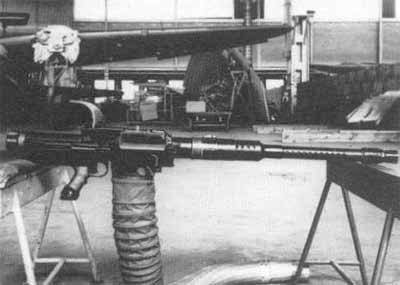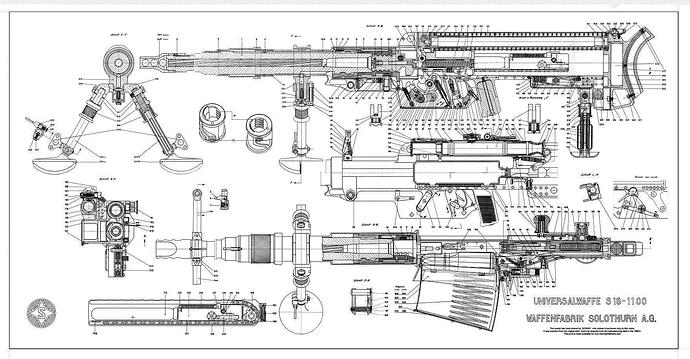Mauser EW 141 , the mistery gun.
This is definately the most unknow of the german weapon used in armor vehicles.
Some sources named this as a 20 mm weapon, some others as a 13 mm machinegun. Both are wrong.
The EW 141 derivated from the experimental heavy fast firing machinegun MG 141 ,as his predecessor the EW 141 is not a 13mm or 20 weapon but it use a 7,92x95 round from the standar antitank rifles Pzb 38/39.
EW 141 prototipe, receiver cover opened, note the dissasembled bolt, the extremely thick tube, and the single knuckled section.

His EW abreviature goes for EinbauWaffe, emplacement gun, since it was designed to be instaled in a single place turret for light tanks/armored cars. The EW 141 is a semi-automatic, belt feed, quick change heavy barrel rifle. It was no capable to fire in full automatic mode.
The design of the EW 141 was completed in 1940 and 5 of these weapon were manufactured before the end the year.
35 were manufactured in 1941 and the rest 20 in 1942.
Despite it shorts numbers it cannot be considered as a experimental weapon since it enterered in action, was used by light panzer against the allies in the days after the D-day invation.
EW “Ersatzlauf” (replacement barrel") inside the hull of a VK 601/panzer 1 ausf C. This is obviously a production weapon, it had two knuckled sections and a more conical shape in the threaded section.

EW 141 characteristics.
Lenght: 1670mm
Barrel lenght: 1085 mm
Weight: 30,1 kilograms.
Muzzle speed: 1170 m/s ( Patrone 318 S.m.K (H) L`spur)
Armor penetration: 24-25 mm rolled homogeneous plate sloped 30º at 100 meters.
Ciclic rate: semiautomatic only, estimated in 100 rpm.

















